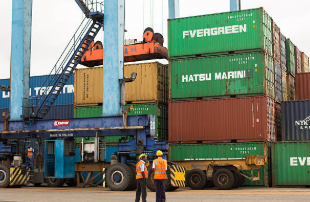The Government of South Sudan on Thursday revealed that Kenyan authorities have imposed a USD 5,000 security levy on each goods container headed for South Sudan.
Addressing a press conference on Thursday, National Transport Minister Rizik Zakaria Hassan, who led a high-level assessment delegation to Kenya a few days ago, also disclosed that there are disparities in the security fees charged for different destinations.
“Upon our assessment on the ground, we realized there are disparities. Fees are not equally applied to the goods heading for the northern corridor countries,” he stated. “For instance, for goods heading to Kenya, the container security fee is USD 1,000, Uganda, and the Democratic Republic of Congo (DRC), USD 1,500. However, the security fees for a container coming to South Sudan are USD 5,000, and that is within Kenya.”
Zakari said that for goods to reach South Sudan, it will cost traders more than the amount used to purchase the cargo.
“Crossing the border will amount to USD 6,000. Those are the security fees which have been levied on the containers,” he stated. “Now, the challenge is that these fees, and there are contemporary challenges on the ground like distance, infrastructure, logistics, roadblocks, and other uncertainties.”
The minister said they also discovered disparities in the grace period for returning containers, with Kenya and Uganda given up to 45 or 60 days, but South Sudan given only 14 days. He disclosed that agreed with the Kenyan authorities to extend the grace period from 14 days to 45 days to give traders in South Sudan time to return containers to Mombasa.
For his part, Ladu Lukak, Chairperson of the South Sudan National Chamber of Commerce, echoed the issues raised by the minister.
“In the past, containers were shipped from Mombasa direct to Juba, but now they ship containers from Mombasa to Nairobi and from there the container is transported to South Sudan,” he lamented. “As the chamber of commerce, we disagreed with the move to transport containers to Nairobi because it increases fees. They used USD 200 for loading and another USD 200 for offloading a container.”




